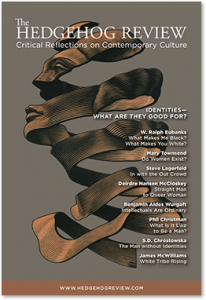W. Ralph Eubanks in The Hedgehog Review:
 The obelisk bearing the chiseled gray-granite face of a Confederate soldier enters my field of vision each morning as I stroll across campus. After forty years away from Mississippi, I returned last year to teach at my alma mater, Ole Miss. Having entered the University of Mississippi in 1974, only twelve years after James Meredith shattered the color barrier, I was one of about fifty black students in a freshman class of more than 800, African Americans then making up less than 5 percent of the entire student body.
The obelisk bearing the chiseled gray-granite face of a Confederate soldier enters my field of vision each morning as I stroll across campus. After forty years away from Mississippi, I returned last year to teach at my alma mater, Ole Miss. Having entered the University of Mississippi in 1974, only twelve years after James Meredith shattered the color barrier, I was one of about fifty black students in a freshman class of more than 800, African Americans then making up less than 5 percent of the entire student body.
During my time as a student at Ole Miss, the culture, heritage, and traditions of the university stood as obdurate barriers to a black person attempting to feel part of the university, much less at home in it. And though Ole Miss and the state of Mississippi more broadly have since made certain commendable strides in reckoning with the past, the statue is a reminder of how the forces of race and history remain in constant collision, and of how the misinterpretation of the past can sometimes overshadow historical reality.
“Most white Americans are obviously and often all too unconsciously committed to White Anglo-Saxon Protestant supremacy,” wrote the essayist and critic Albert Murray more than forty years ago in his enduring reflections on our nation’s “mulatto” culture, The Omni-Americans. What we are witnessing today, however, is quite conscious.
More here.
